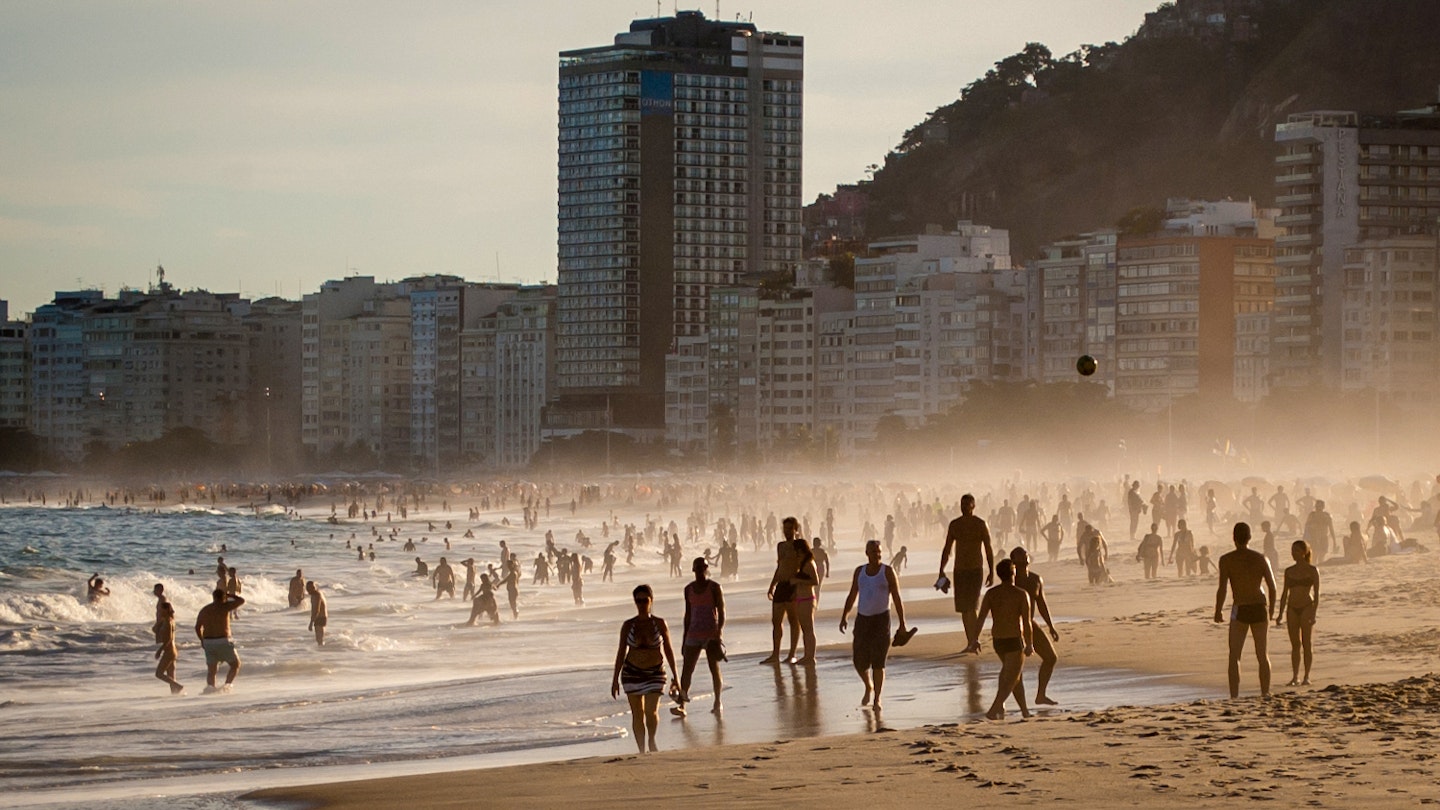Top 10 Places Not to Miss in Rio de Janeiro
It’s a rare visitor who doesn’t fall hard for the alluring beauty of Rio de Janeiro. Known as the cidade maravilhosa, the “marvelous city” stretches between rain-forest covered peaks and white-sand beaches, with a wild mix of architecture – from beaux-arts theaters to art deco apartment buildings – scattered along its buzzing tree-lined streets. Here are our top 10 places not to be missed while visiting the city.
Copacabana
For seaside strolls, it’s hard to beat Copacabana, with its comely crescent-shaped beach that stretches for 4km against a backdrop of dramatic forest-covered peaks. Eating and drinking kiosks dot the shore – with kitchens cleverly hidden below ground – and make fine places to rehydrate while admiring the view.
Ipanema
The favored stomping ground for style-loving cariocas (Rio locals), Ipanema is blessed with a magnificent beach and leafy streets dotted with enticing outdoor cafes and restaurants, pricey boutiques, and lively bars. It was here that Tom Jobim and Vinicius de Moraes penned their famous ‘Garota de Ipanema’ (Girl from Ipanema) in homage to the young beauty who passed by their bar stools each day.
Centro
Rio’s commercial and financial hub has all the trappings of a bustling, modern city. However, if you peer beneath the veneer of skyscrapers and traffic-clogged boulevards, you find the early roots of Rio. Places like the National History Museum, housed in the former 1764 arsenal, showcase royal carriages and relics from imperial days. Other grand buildings around Centro attest to the wealth lavished on the former capital, from the gilded baroque splendor of the 17th-century Mosteiro de São Bento to the 1905 Theatro Municipal, inspired by the Paris Opera. The Paço Imperial is also worth visiting; it once served as the seat of power during the Portuguese reign in Rio and now houses several restaurants and extensive art galleries.
Santa Teresa
Set on a hill overlooking downtown and Guanabara Bay, Santa Teresa is a district of worn 19th-century mansions and bohemian cafes, where an old-fashioned tram still rattles along the cobblestone streets. Take in the fine views from the Parque das Ruinas, then stop in for potent caipirinhas and a filling pot of feijoada (pork and black bean stew) at Bar do Mineiro.
Lapa
Lying at the foot of Santa Teresa, Lapa is a former red-light district that has transformed into the samba capital of Brazil. Crumbling old theatres and taverns today house beautifully restored music-filled bars and dance halls. On weekends, crowds pack the streets until just before dawn, enjoying vibrant Brazilian rhythms at popular spots like Rio Scenarium and Democraticus.
Lagoa
Lying just north of Ipanema and Leblon, the ‘lake’ is actually a saltwater lagoon and a favored destination for egrets, joggers, and cyclists looping around the 7km-long shoreline path. In the evening, outdoor restaurants near the lake’s edge provide a charming backdrop for cocktails, especially at Palaphita Kitch, known for its garden-like setting and tasty drinks.
Jardim Botânico
A few blocks west of Lagoa, the Botanical Gardens occupy 137 hectares and blossomed thanks to Dom João VI, who by royal decree ordered their creation in 1808. Over 5000 tropical species are on display, including a remarkable orchid collection and stunningly large Vitoria Regia water lilies in the Amazonas section.
Pão de Açúcar
Translated as Sugarloaf Mountain, this 395-meter summit offers breathtaking views over Rio and is essential for even a brief visit to the city. Most visitors opt for the two-stage aerial cable car to reach the summit, though adventurous souls may choose to hike it, equipped with proper gear. Experienced guides from Crux EcoAventura are available to lead the way.
Christ the Redeemer
One of Rio’s iconic landmarks, the 40-meter-tall open-armed savior stands proudly atop Corcovado Mountain, enjoying unrivalled panoramic views that contribute to his serene expression. The best way to reach this iconic spot is via cog train, which makes a scenic ascent through well-preserved rain forests. It’s advisable to visit early to avoid the crowds.
Parque Nacional da Tijuca
Part of the extensive Atlantic rain forest that once covered the Brazilian coast, this 120 sq km national park is filled with diverse plant and animal life, offering challenging hikes along with breathtaking views amidst lush jungles. The park is best explored by car; numerous agencies offer guided hikes and tours, including Rio Hiking and Rio Adventures.





